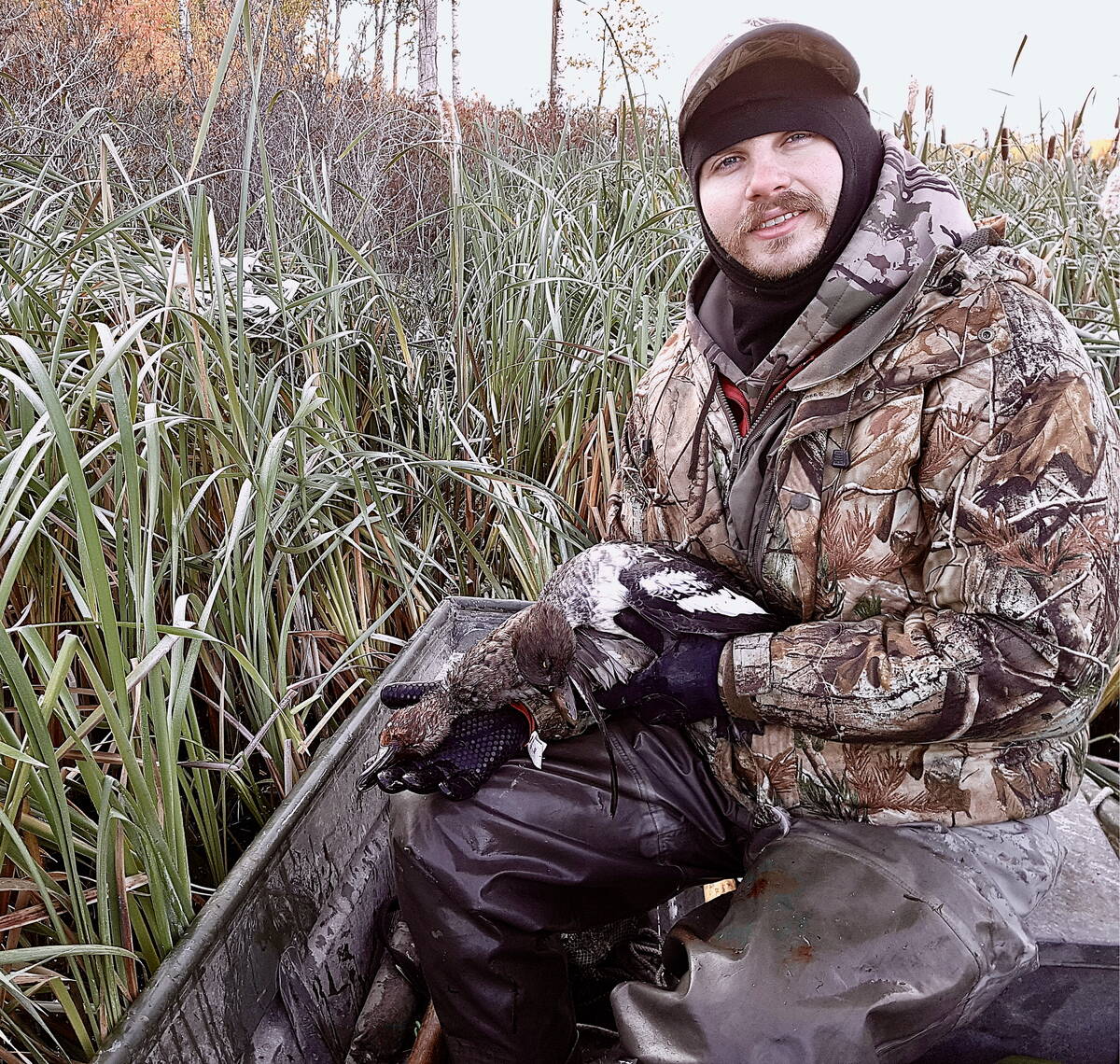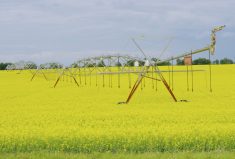Glenboro and Holland, Man. weren’t like their fellow communities to the east in early May.
Heavy precipitation in late April had not made them islands, like some towns along the Red River, which had been isolated by flood water. In fact, the area in central Manitoba was one of the first to see producers hit the field, in a year that had seen few acres planted province-wide by even mid-May.
For agribusinesses needing to ship product, however, the area might as well have been equally under water.
Read Also

Mastering Manitoba’s late-season bird hunt
Manitoba hunters still have plenty of hunting opportunities left in fall 2025 for grouse, partridge and even waterfowl like ducks and geese.
Why it matters: Monster potholes and flood detours have been in the news this spring, leading one area of central Manitoba to press its long-standing point on the need for well-maintained, unrestricted highway routes.
Megan Kemp, sales and purchasing manager for Zeghers Canada near Holland, said their company, along with many others in the area, faced serious barriers to doing business after their one major trade route to the rest of central and eastern Manitoba was cut off.
Highway (PTH) 2, the main east-west route in the region, had been closed for about a week, thanks to overland flooding west of St. Claude, Man. North and south of the route, parallel highways PTH 1 and PTH 23 were clear. Making that jaunt was going to be a problem for a loaded trailer, however; all the north-south routes in the area were under spring weight restrictions.
Restricting loads to 90 per cent of legal weight, the next-best option available in the region, “doesn’t make it worth shipping, because you’re under-shipping your shipment by a fair bit,” Kemp said.
The closure put a stark light on the lack of north-south RTAC routes — highways classed to handle heavy truck traffic and thus allowed to carry heavier loads under weight restrictions — in the area, Kemp argued. Loaded eastbound trucks were forced to detour 80 kilometres in the wrong direction to pass north through Brandon and then on to Winnipeg on the Trans-Canada Highway.
While the major urban centres of Winnipeg and Brandon have RTAC routes running south and north of them, the area between the two boasts only one route, PTH 13 through the Pembina Valley, with the same consistent lack of restriction down its length.
“At current freight prices, it’s a killer on any business,” Kemp said.
The closure cost her company about $1,000 per load in added shipping fees and added about two hours to each trip, she said. The company’s rail container service was unwilling to make that detour, cutting off the company’s ability to export or ship by train.
“They wouldn’t even come out. They just said, ‘We’ll give the container to someone else,’” Kemp said.
History
It is far from a new complaint in the region.
PTH 5 and PTH 34, both north-south routes running through the west-central Manitoba region and repeatedly pushed by locals for improvement are, “in bad shape,” Kemp noted.
Improvements on PTH 5 “would make the most sense,” Kemp said, noting that part of the highway near the Trans-Canada Highway is already RTAC rated, to offer trucking access to the McCain Foods plant south of Carberry, Man.
“Either one, as long as we have a highway in that region that is RTAC’ed, it allows us to ship during road bans,” she said.
The Manitoba Trucking Association has said that the issues reported in Kemp’s corner of the province are not unusual any time something happens to impact major routes.
Certainly, flooding has disrupted normal trucking routes in parts of Manitoba, including detours around a closed PTH 75, the main trade artery between the U.S. and the City of Winnipeg.
“The issues our industry has seen the last few weeks are the same ones we regularly see whenever major transportation routes are shut down: road safety, delayed drivers, increased fuel costs and associated vehicle wear and tear, and roads that weren’t designed for high commercial traffic volumes,” a spokesperson for the association said.
The MTA is working with the province on “highway infrastructure, road maintenance, and other issues for the development and ongoing maintenance of safe and efficient transportation corridors,” they added.
Improvements promised
In late April, the province announced a $1.5-billion three-year highway improvement plan as part of the 2022 budget, including improvements to PTH 5.
The program will support the creation of a strategic shipping route “grid,” “to allow heavier loads on provincial highways to support the shipments of goods and services across markets,” the province said at the time.
North-south routes in western Manitoba (PTH 21 and PTH 83) and eastern Manitoba (PTH 59), have also been earmarked for the program, as well as Winnipeg’s perimeter.
Both PTH 5 and PTH 34 were included in the province’s online consultations on the grid strategy, a provincial spokesperson said.
They added that a working group between local governments and Manitoba Transportation and Infrastructure (MTI) has also developed a prioritized project list to develop an unrestricted north-south route.
“Allowing heavier loads on provincial highways supports Manitoba businesses by requiring fewer trips/shipments to transport goods from one location to another and requires greater investments to build the highway infrastructure such as roads, bridges and culverts that support the loading on these routes,” the spokesperson said.
Craig Soldier of the RM of Victoria, however, says plans to upgrade PTH 5 are not good enough.
“We need (PTH) 34 to be brought up to the standards that they want to bring (PTH) 5 up to as well,” he said. “Whether the government likes it or not, (PTH) 34 is a main corridor for semi-trailers, regardless of what they’re hauling. On any given day, when there’s no restrictions, you probably see 100 trucks.”
Truckers will tend to take the shortest route, regardless of which roads the province would prefer them to drive, he also said, pointing to current high gas prices.
Meanwhile, he argued, the deteriorated conditions of PTH 34 and its shoulders raise safety concerns for both commercial truckers and the many farmers who live around and transport grain down it.
The highway is currently rife with potholes, he argued, some over a foot wide and several inches deep. Shoulders are narrow and steep, affecting safe travel for farmers transporting equipment and making passing difficult, he said. Meanwhile, a major bridge over the Assiniboine River between Holland and Austin, Man., has been awaiting repair or replacement for about a decade, and currently sports a traffic light to manage its single open lane.
“I walked the bridge a few years ago and the asphalt is actually missing. You can see the water through the bridge,” he said.
“The government’s thinking about the commercial industry, but it’s forgetting about the farmers, the ones who feed them,” Soldier also said. “It needs to provide a better highway for them.”
The province says a replacement for the bridge is in the cards, with construction due to start in 2022-23 and ending two years later.
MTI “recognizes that Provincial Trunk Highway (PTH) 34 and PTH 5 are important routes for agricultural producers in the area,” a spokesperson said.
















